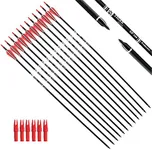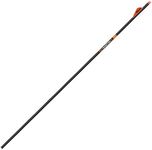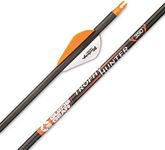We Use CookiesWe use cookies to enhance the security, performance,
functionality and for analytical and promotional activities. By continuing to browse this site you
are agreeing to our privacy policy
10 Best Carbon Arrows 2025 in the United States
From leading brands and best sellers available on the web.How do we rank products for you?
Our technology thoroughly searches through the online shopping world, reviewing hundreds of sites. We then process and analyze this information, updating in real-time to bring you the latest top-rated products. This way, you always get the best and most current options available.

Most Popular Categories Right Now
FAQ
Buying Guide for the Best Carbon Arrows
Choosing the right carbon arrows is crucial for any archer, whether you're a beginner or an experienced shooter. Carbon arrows are known for their durability, consistency, and lightweight properties, making them a popular choice. To find the best fit for you, it's important to understand the key specifications and how they align with your needs and preferences. Here are the main specs to consider when selecting carbon arrows and how to navigate them effectively.SpineThe spine of an arrow refers to its stiffness or flexibility. This is important because it affects the arrow's flight and accuracy. Arrows with a lower spine number are stiffer, while those with a higher spine number are more flexible. If you have a high draw weight bow, you'll need stiffer arrows (lower spine number) to handle the force. Conversely, for lower draw weight bows, more flexible arrows (higher spine number) are suitable. To pick the right spine, consider your bow's draw weight and your shooting style.
LengthArrow length is the measurement from the nock groove to the end of the shaft, not including the point. This is important for safety and performance. Arrows that are too short can be dangerous, while arrows that are too long can affect accuracy. To determine the right length, measure your draw length and add 1-2 inches. This ensures the arrow is long enough to be safely drawn past the bow's riser.
WeightThe weight of an arrow, often measured in grains per inch (GPI), affects its speed and kinetic energy. Heavier arrows provide more kinetic energy and penetration, making them ideal for hunting. Lighter arrows travel faster and are often preferred for target shooting. To choose the right weight, consider what you will be using the arrows for. Hunters typically opt for heavier arrows, while target shooters may prefer lighter ones for faster flight and flatter trajectory.
DiameterArrow diameter can influence penetration and wind resistance. Smaller diameter arrows penetrate better and are less affected by wind, making them suitable for long-range shooting and hunting. Larger diameter arrows are more stable and easier to see, which can be beneficial for target shooting. Choose the diameter based on your primary use: smaller for hunting and long-range, larger for target practice.
FletchingFletching refers to the vanes or feathers attached to the arrow shaft, which stabilize the arrow in flight. The type, size, and configuration of fletching can affect accuracy and speed. Larger fletching provides more stability but can slow the arrow down, while smaller fletching offers less drag and faster speeds. For hunting, larger fletching is often preferred for stability, while target shooters might opt for smaller fletching for speed and precision.
NocksNocks are the small plastic tips at the end of the arrow that fit onto the bowstring. They are important for ensuring a consistent release and proper alignment. Nocks come in different sizes and shapes, and it's important to choose ones that fit your bowstring properly. A good fit ensures better accuracy and consistency. Consider the type of bowstring you have and choose nocks that match its diameter and style.






















